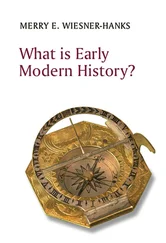R. Nisbet Bain - The Cambridge Modern History
Здесь есть возможность читать онлайн «R. Nisbet Bain - The Cambridge Modern History» — ознакомительный отрывок электронной книги совершенно бесплатно, а после прочтения отрывка купить полную версию. В некоторых случаях можно слушать аудио, скачать через торрент в формате fb2 и присутствует краткое содержание. Жанр: unrecognised, на английском языке. Описание произведения, (предисловие) а так же отзывы посетителей доступны на портале библиотеки ЛибКат.
- Название:The Cambridge Modern History
- Автор:
- Жанр:
- Год:неизвестен
- ISBN:нет данных
- Рейтинг книги:4 / 5. Голосов: 1
-
Избранное:Добавить в избранное
- Отзывы:
-
Ваша оценка:
- 80
- 1
- 2
- 3
- 4
- 5
The Cambridge Modern History: краткое содержание, описание и аннотация
Предлагаем к чтению аннотацию, описание, краткое содержание или предисловие (зависит от того, что написал сам автор книги «The Cambridge Modern History»). Если вы не нашли необходимую информацию о книге — напишите в комментариях, мы постараемся отыскать её.
The first series was planned by Lord Acton and edited by him with Stanley Leathes, Adolphus Ward and George Prothero.
The Cambridge Modern History Collection features all five original volumes:
Volume I: The Renaissance
Volume II: The Reformation, the End of the Middle Ages
Volume III The Wars of Religion
Volume IV: The 30 Years' War
Volume V: The Age of Louis XIV
The Cambridge Modern History — читать онлайн ознакомительный отрывок
Ниже представлен текст книги, разбитый по страницам. Система сохранения места последней прочитанной страницы, позволяет с удобством читать онлайн бесплатно книгу «The Cambridge Modern History», без необходимости каждый раз заново искать на чём Вы остановились. Поставьте закладку, и сможете в любой момент перейти на страницу, на которой закончили чтение.
Интервал:
Закладка:
It may be doubted whether Louis aimed at converting predominance into sovereignty. But he was determined to conquer Naples, and he hoped that an occasion would offer to establish the Cardinal of Rouen as pope. These ends achieved, he might be content with the substance, while the Emperor still enjoyed the shadow. Meanwhile no great effort would be required to keep Maximilian in check. But with regard to Naples Louis had in Aragon a more dangerous rival. Naples had been a part of the kingdom of Sicily, and Sicily was owned by Aragon. Moreover Alfonso of Aragon had been de facto King of Naples, and had established there the ruling race of kings. These claims were not convincing, but neither were Louis’ claims beyond possibility of question. Nor could the King of Sicily remain a tranquil spectator, while his neighbour and relative was displaced by a new and aggressive power. Louis determined to compromise, and (November, 1500) concluded at Granada a secret treaty with Aragon for a joint conquest of Naples, conceding to Ferdinand a fair half of the kingdom, and, provisionally, the provinces of Apulia and Calabria.
Strengthened by this compact, Louis was free to move. In May, 1501, his army was ready in Lombardy. With the certainty of Spanish aid, 1,000 lances, 4,000 Swiss, and 6,000 French infantry were held sufficient. The command was divided between Aubigny, the Count of Caiazzo (Francesco di San Severino), and the Duke of Valentinois. A fleet under Ravenstein was operating on the coast from the convenient base of Genoa. Federigo relied on help from Sicily, where was the great Gonzalo, who had recently returned from a successful expedition against the Turks, and who, acting under orders, was careful not to undeceive him. The first news of the coalition came to Naples from Rome, where in June Alexander issued a bull depriving Federigo of his throne and confirming the partition already arranged between the Kings of France and Aragon. In July the French army reached Capua, which was held by Fabrizio Colonna with a sufficient force. But the French artillery soon made a practicable breach, and, while terms of surrender were being discussed, the French were admitted into the town, which they sacked with every circumstance of cruelty and outrage. There was no further resistance. On August 2 Federigo retired to Ischia, and after a time decided to accept the asylum offered to him by Louis, who provided him with a rich endowment and an honourable position in France. On August 4 French garrisons occupied the castles of Naples, and la Palice was sent to hold the Abruzzi. Louis d’Armagnac, duke of Nemours, was appointed viceroy of the newly acquired kingdom.
Meanwhile Gonzalo without difficulty occupied his master’s share of the kingdom of Naples, and was joined by Prospero and Fabrizio Colonna, whose family was about this time expelled from their possessions in papal territory, while Cesare, their bitterest enemy, was leagued with the French. Only at Taranto was there considerable resistance. Here lay Federigo’s son, Ferrante. The town was strong, but a siege by sea and land compelled it after a stout resistance to come to terms (March, 1502). Gonzalo promised his liberty to Ferrante, but the Spanish King disregarded the promise, and caused the young prince to be sent in custody to Spain.
The treaty of Granada had not been so carefully drawn as to exclude all possibility of doubt. France was to have the Abruzzi, the Terra di Lavoro, Naples, and Gaeta, while Spain received Apulia and Calabria. But nothing was said about the province of the Capitanata, lying between Apulia and the Abruzzi, about the Basilicata, lying between Calabria and Apulia, or about the two Principati, lying between the Basilicata and the Terra di Lavoro. Yet the clause stipulating that the incomes of the two shares should be approximately equal might, with a little goodwill, have pointed the way to an equitable settlement. The main difficulty turned on the question of the Capitanata. The inhabitants of the barren Abruzzi depended on the corn-lands of the Capitanata for their food-supplies. The flocks that wintered in the plains were driven in summer to the mountain pastures, from Apulia proper into the Southern Apennines, and from the Capitanata into the Abruzzi, toll (dogand) being taken from them on the way for the King of Sicily. The treaty settled that “the dogana of Apulia” should be collected by the commissaries of Spain and equally divided between the kings. The French, supported by recent administrative usage, denied that the Capitanata was part of Apulia, and claimed it as a necessary complement of their own share.
No satisfactory agreement was reached on these dangerous points,, although the question was referred to the kings for decision. At Troia in the Capitanata, at Tripalda in the Principato ultra, collisions took place. Finally, in July open war broke out. Louis about the same time visited the Milanese, and apparently purchased the neutrality or support of Cesare by giving him a free hand in the Romagna, and even against Bologna. Reinforcements were sent to the French, and the Spaniards were driven from Cerignola, and then from Canosa (August, 1502). Gonzalo was obliged to concentrate at Barletta on the northerly coast of Apulia, holding also Taranto. The indecision of the French leaders saved the great captain. While they were occupying unimportant places in Apulia and Calabria, and watching Gonzalo at Barletta, the time for a crushing blow went by. The Venetians sent provisions if not money to Barletta. Reinforcements were sent into Calabria from Sicily. In March, 1503, a fresh army reached Reggio from Spain. In April 3000 Landsknechte were sent by Maximilian from Trieste to Barletta. Gonzalo had already shown that he was to be feared, when he fell upon la Palice at Ruvo, defeated, and captured him. On hearing that Aubigny had been routed at Seminara in Calabria, he was able to take a vigorous offensive. He left Barletta with the chief part of his troops and seized Cerignola. The French generals decided to strike a despairing blow. They attacked Gonzalo’s army in a fortified position at Cerignola, and were completely defeated, Nemours being killed. The news determined Allegre to evacuate Naples except the castles, and to retire to Gaeta. On the 16th of May Gonzalo entered the capital. Prospero Colonna was sent to subdue the Abruzzi, while the great engineer, Pedro Navarra, employed the newest resources of military art against the castles of Naples. In a short time they were made untenable. At Gaeta however the French, strengthened by reinforcements from Genoa, repulsed the conquerors; while Louis d’Ars still held Venosa with a remnant of the army defeated at Cerignola. At the very crisis of the war Louis had been entangled in a futile negotiation. Since the end of 1500 Philip, Archduke of Austria, had been busying himself with the double object of securing his dominions in the Netherlands against France, and of obtaining for his infant son, the Duke of Luxemburg, afterwards Charles V, additions by marriage to those vast possessions to which he was already heir presumptive. The outcome of these efforts was a contract of betrothal at Lyons (August, 1501) between Charles and Claude, the daughter of Louis XII: a provisional treaty at Trent between Maximilian and Louis (October, 1501) agreeing to this marriage, and stipulating the investiture of Milan for Louis: an interpretation of the same arranged between Philip and Louis in December of the same year at Blois, but never accepted by Maximilian: and finally a treaty concluded by Philip with Louis at Lyons (April 5, 1503), in the name of Ferdinand and Isabella, by which the whole of the kingdom of Naples was to be given to the infant pair. This last treaty was never ratified by Ferdinand and Isabella, who asserted that Philip had exceeded his powers, and Gonzalo paid no heed to it. But Louis showed less prudence. Relying on the treaty, he deferred, in the critical month of April, the despatch of a body of troops which he had ready in Genoa. It is true that the threatening movements of the Swiss, to whom Louis was obliged at this moment to cede Bellinzona, gave an additional reason for delaying what had been already too long delayed.
Читать дальшеИнтервал:
Закладка:
Похожие книги на «The Cambridge Modern History»
Представляем Вашему вниманию похожие книги на «The Cambridge Modern History» списком для выбора. Мы отобрали схожую по названию и смыслу литературу в надежде предоставить читателям больше вариантов отыскать новые, интересные, ещё непрочитанные произведения.
Обсуждение, отзывы о книге «The Cambridge Modern History» и просто собственные мнения читателей. Оставьте ваши комментарии, напишите, что Вы думаете о произведении, его смысле или главных героях. Укажите что конкретно понравилось, а что нет, и почему Вы так считаете.












